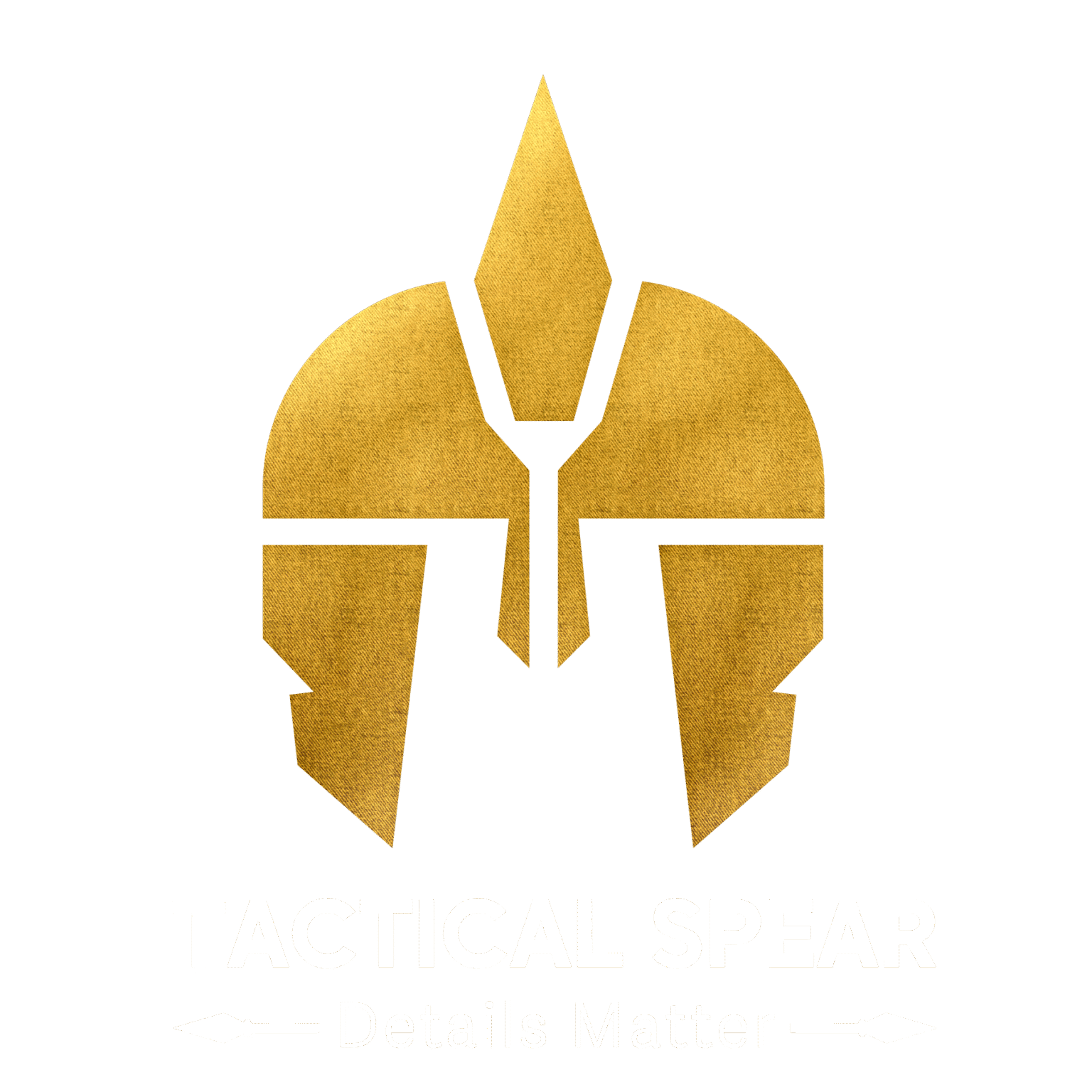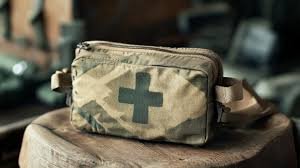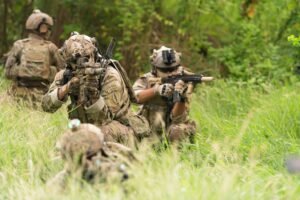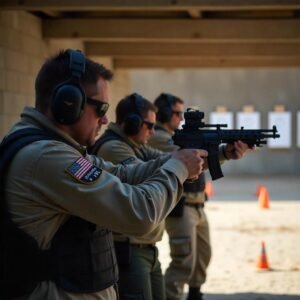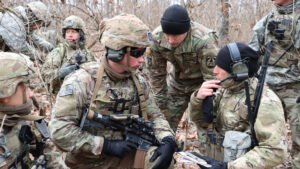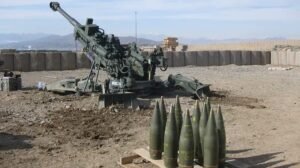A technical yet tactical breakdown of bullet components, injury mechanisms, and how velocity, range, and bullet type influence gunshot wounds. A must-read for professionals in firearms training, forensic analysis, and tactical medicine
❖ Components of a Bullet
Each cartridge (round) used in firearms consists of the following key elements:
- Casing (Cartridge Case): The outer shell that houses the gunpowder and the projectile.
- Primer: Located at the base of the casing, it ignites when struck by the firing pin.
- Gunpowder (Propellant): The explosive material inside the casing.
- Bullet (Projectile): The front part that is launched toward the target.
___
* Firing Mechanism Explained:
When the trigger is pulled, the firing pin strikes the primer, causing it to ignite the gunpowder. The gunpowder burns rapidly, turning into gas and building up pressure. This pressure forces the bullet out of the casing and down the barrel.
Inside the barrel, rifling grooves cause the bullet to spin, which stabilizes it for greater accuracy and range as it travels through the air.
___
❖ Gunshot Wound Factors
Several key factors influence the extent and nature of injury from a bullet:
Caliber (Size of Bullet):
Larger calibers cause more tissue destruction. Caliber is usually measured in inches (e.g., .45) or millimeters (e.g., 9mm).
If the barrel is too wide, the bullet may wobble, reducing accuracy.
If too tight, it could cause the barrel to explode.
Mass (Bullet Weight):
Heavier bullets generally cause more damage.
Velocity (Speed of Bullet): Higher speed increases impact force and injury severity.
Influenced by gunpowder quantity and barrel length.
Distance to Target:
The bullet loses velocity after exiting the barrel. Greater distances result in less impact energy and reduced tissue damage.
* Estimating Shooting Distance From the Wound
Firearms release additional substances when firing:
- Carbon Monoxide & Burning Gases: Travel up to 2 inches from the barrel.
- Soot (Gunpowder Residue): Spreads up to 7 inches.
- Unburned Gunpowder: May cause skin punctures or “tattooing”.
___
* Types of Gunshot Wounds by Range:
- Contact Shot (Barrel touching skin):
- Red discoloration from carbon monoxide.
- Charred edges from hot gases.
__
- Close Range Wound:
- Soot visible, which can be wiped off.
- Powder tattooing (permanent punctate marks).
__
- Intermediate Range Wound:
No soot or burns, but may show faint powder marks.
- Distant Shot:
- No soot, burns, or tattooing.
- Only a small entry hole, often with surrounding abrasion.
- Circular abrasion indicates a 90° angle hit.
- Asymmetrical abrasion suggests an angled shot.
___
❖ Types of Bullets
Most bullets are made of soft metals, which deform on impact.
Full Metal Jacket (FMJ):
- Fully encased in a harder metal like copper.
- Less likely to deform, may pass cleanly through targets.
__
Semi-Jacketed:
- Partial metal cover with exposed tip.
- Tip flattens and expands on impact.
- Can break into fragments, spreading damage over a wider area.
__
Hollow Point:
- A recessed or flat nose cavity.
- Expands on impact (mushroom effect).
- Transfers energy quickly and reduces over-penetration, maximizing internal damage.
___
❖ Bullet Behavior on Impact
Low-Velocity Bullets (e.g., from handguns):
- Crush tissue directly in their path.
- Create a permanent cavity.
__
High-Velocity Bullets (e.g., from rifles):
- Create both a permanent cavity and a
- temporary cavity due to a shockwave.
- This can damage tissues not directly hit by the bullet.
__
Very High-Velocity Bullets:
- The shockwave may injure organs and tissues far from the direct path.
- May fragment or tumble, increasing the extent of damage.
___
* Tissue Type Matters:
Dense Organs (liver, brain, spleen): More prone to damage due to low elasticity.
Elastic Tissues (lungs, muscles): Can stretch and return to original form with less permanent injury.
Bone Reaction by Velocity:
- High-Speed: Bone shattering.
- Medium-Speed: Bone fracturing.
- Low-peed: Bullet may deflect, causing unexpected internal injuries.
___
❖ Exit Wounds
- Not all bullets exit the body. Deformed, flattened, or slowed bullets may remain lodged inside.
- Exit wounds are not always larger than entry wounds:
- Low-speed FMJ bullets may leave exit holes similar in size to entry points.
- High-speed or deforming bullets typically create large, gaping exit wounds with significant tissue loss.
___
* Final Thoughts
Understanding bullet construction, trajectory, and terminal behavior is essential in tactical medicine, forensic investigation, and combat readiness. The deeper your grasp of ballistics, the better your decisions in the field—whether you’re pulling the trigger or treating the aftermath.
